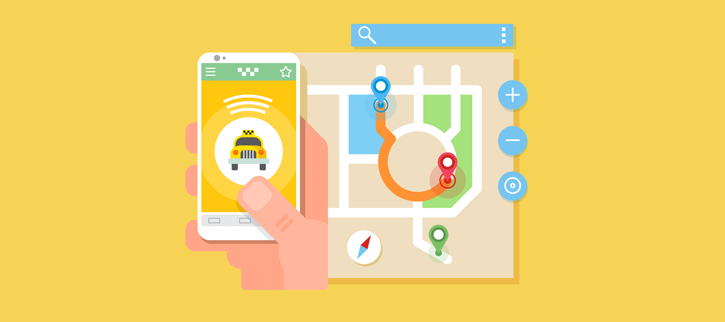If you’re looking for a way to make money as a driver, working for Uber or Lyft may be the perfect opportunity. These ridesharing companies employ drivers who use their own vehicles to meet the transportation needs of customers who register with the company app to book rides. As a driver, you must have a relatively new car in good working order and carry enough liability insurance to meet your state’s minimum requirements. Additionally, you may want to take out a full coverage policy to protect your vehicle, or even purchase commercial insurance to ensure you have enough coverage for any situation that might arise.
What Is Ridesharing?
Uber and Lyft are app-driven ridesharing companies that offer a convenient alternative to licensed taxi services across North America and other parts of the world. The drivers enjoy the flexibility of using their own vehicles and setting their own schedules to suit their lifestyles, and the customers get the convenience of one-click driver services through dedicated apps.
As a registered driver, you log into the company app on your smartphone to receive ride requests from customers. Once you accept a job, you pick up the customer and drive to his or her destination. Customers make payments (including tips) through the app, so there’s no need to worry about carrying money in your vehicle. When you work using these apps, you’re not employed by either company; instead, you work as an independent contractor, and the apps facilitate your communication and payment transactions with customers.
What Kind of Insurance do Uber/Lyft Drivers Need?
You must carry personal liability insurance that meets your state’s minimum requirements (and the minimum requirements of the states in which you intend to drive). It’s essential to inform your insurance provider that you’re working as a ridesharing driver. Some insurance companies may not want to continue providing coverage based on your new job, or may request that you purchase additional coverage. Some providers may even cancel your personal policy, or refuse to pay out in the event of an accident, if you have withheld your role as a rideshare driver from them.
Most of the major insurance providers offer specific products for drivers working for ridesharing services. These policies usually cost less than commercial insurance and are a good way to supplement your personal policy.
What Do Uber and Lyft Cover?
Lyft and Uber offer a certain amount of coverage as a benefit to drivers. This coverage is a valuable asset, but there are specific limitations. You should fully understand all aspects of the policies before you start work or you may be uninsured or underinsured, especially if you have an accident when you aren’t logged into the ridesharing service app or when you’re waiting for your next fare.
Lyft and Uber driver insurance provides a range of additional coverage types:
- Commercial auto liability insurance
- Uninsured and underinsured motorist coverage
- Contingent collision and comprehensive insurance for drivers with personal collision and comprehensive coverage
This coverage is in excess of any personal or commercial insurance you may have, but it’s only valid while you use your vehicle for work.
How Lyft and Uber Insurance Works
The amount of coverage Lyft and Uber provide depends on whether you’re logged into the ridesharing app, and how much personal coverage you own.
| COMPANY | COVERAGE LIMITS WITH PASSENGERS/AFTER ACCEPTING A RIDE REQUEST | LIABILITY LIMITS WITHOUT PASSENGERS AND BEFORE ACCEPTING A RIDE REQUEST | COMPREHENSIVE/COLLISION | COMPREHENSIVE/COLLISION DEDUCTIBLE |
| UBER | $1 million liability per incident / $1 million uninsured/underinsured motorist per incident | $50,000 per person / $100,000 per incident / $25,000 property damage | $50,000 (applies only with passengers) | $1,000 |
| LYFT | $1 million liability per incident / $1 million uninsured/underinsured motorist per incident | $50,000 per person / $100,000 per incident / $25,000 property damage | $50,000 (applies only with passengers) | $2,500 |
* Lyft and Uber provide contingent liability in these circumstances if your personal liability insurance doesn’t protect you.
** Lyft and Uber provide contingent collision and comprehensive insurance in these circumstances if you already have collision and comprehensive coverage on your personal auto insurance.
What Happens If You Have an Accident?
Regardless of how much Lyft or Uber insurance coverage you have, the process is the same in the event of an accident. After exchanging personal insurance details with everyone involved in the accident, file a claim with your personal insurance and contact Uber or Lyft to let them know what has happened.
Bear in mind that, as a rideshare driver, your vehicle is your livelihood, and you should take care of it. If you meet the Lyft or Uber insurance requirements for personal collision and comprehensive coverage, you’re entitled to additional protection from your employer. The way to ensure you have financial security in any situation, regardless of fault, is to purchase adequate personal liability, collision and comprehensive coverage before you start work. Use an online insurance comparison tool to find the right products for your needs, including products tailored for ridesharing drivers that meet the minimum coverage limits, to get the most protection possible.




















